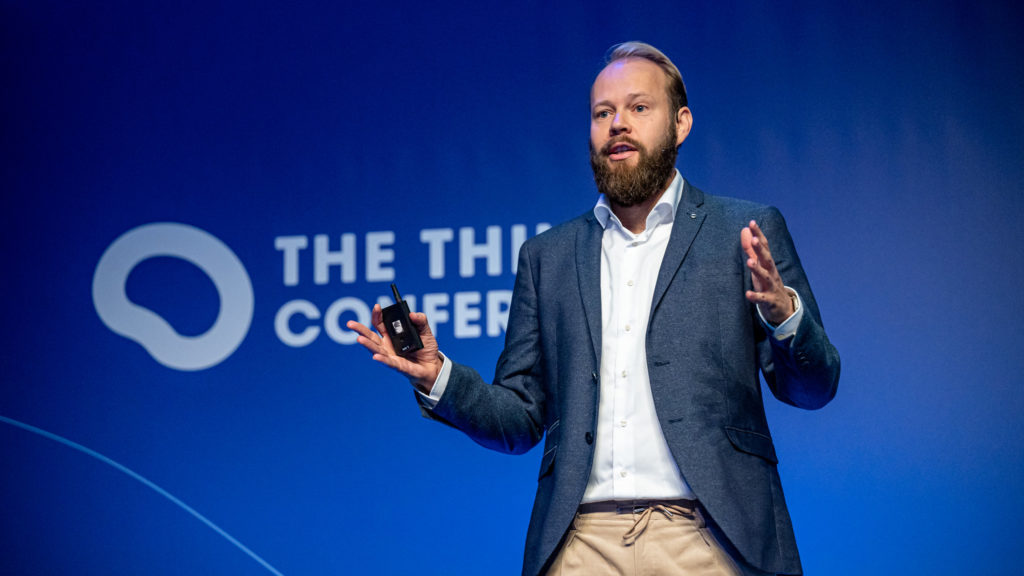“You can’t just put on a hoodie and be down with the kids.” RCR Wireless is in conversation with Wienke Giezeman, co-founder and chief executive at The Things Industries, the Amsterdam-based LoRaWAN collective selling middleware and tooling into the hyperactive low-power end of the IoT market. He is reflecting on the opposite end of it; about the higher-powered IoT pyrotechnics supposedly being sparked by new private 5G technologies.
Having already presented a state-of-the-union address, of sorts, about Darwinism in the traditional IoT ecosystem – which rejects the default narrative about consolidation and convergence, except on the grounds the market’s fragmentation (divergence) has driven the quitters out – he responds to a question about whether the noisy 5G brigade has something to learn from the hungry old IoT mob which has survived the industry’s embattled evolution.

He thinks about Nokia, the rebranded Finnish telecoms vendor which has established itself, arguably, as the brightest star in this new private-5G firmament; he caught up with the firm at Mobile World Congress and Hannover Messe during the spring, he says, to hear it talk about the “openness” of its new corporate logo and brand position – which, we should suppose, is informed in part by its developing raid on the enterprise networking market.
Hence his point about hoodies. “You have to wonder if these companies, positioned as superior forces, which have done great also in terms of new product leadership, can really change to be truly collaborative players,” he says. Giezeman is not questioning Nokia, especially; he notes its historical power in public carrier networks and its present influence in private enterprise ones. It is just that he doubts generally that big firms, culturally entrenched, can really hack it.
Because the lesson of low-powered IoT – tanked-up on corporate diesel and venture propellant, since way before 5G pulled up at the pump, and quickly exploded in a bonfire of industrial realities (to be explained more fully by Giezeman in a separate article) – is that selling digital change is a speculative pursuit, a collaborative endeavour, and a long game. Which is why Ericsson is out, Google is out, and Microsoft is on hold, he says.
It is why Sigfox – a one-time darling of the European start-up scene, a would-be unicorn, and the original agitator in the whole IoT bust – got into trouble in the first place. It is why Deutsche Telekom and Softbank are putting IoT business the way of Germany-based MVNO 1NCE. It is why specialist IoT firms – like Giezeman’s own, growing revenue “profitably” at 60 percent per year, or else picking off rivals – are clearing up in their own micro-domains.
For Nokia et al, the big guns in 5G town, the challenge is entirely cultural. Can they draw together the kind of grizzly posse – of software developers, hardware manufacturers, system integrators – to create industrial order out of digital chaos? Can they manage the whole Industry 4.0 circus in an even manner? Or better: do they even understand they are only performing bears in a semi-autonomous troupe – in a kind of benevolent capitalist anarchy without ringmasters?
Can they really work as part of an open ecosystem? Giezeman responds: “It is not just about changing a logo, right? These companies have to learn how to collaborate, which is hard because it means hiring completely separate account managers – which can actually sell as part of an ecosystem.” And there is the question, as well, of whether these old timers will be accepted in younger circles, anyway – with all their baggy talk about collaboration.
“It is all very cringey,” says Giezeman, imagining the response from the hoodied developer set to Nokia’s wide-armed approach. “It is like your parents talking about sex,” he says. Which is pointed, and hilarious; but it is not the whole story. Because this cultural revolution is sweeping – okay, creeping – through every industrial sector, and not just telecoms. And with 5G, the likes of Nokia are rocking up in even-more-traditional industrial markets like total hepcats – just because they are not so familiar as the old IT networking straights at IBM and Cisco, for example.
This is the kind of argument presented by system integrator Kyndryl – in a separate conversation with RCR Wireless this week – which is stitching Industry 4.0 into serious-minded, hard-nosed enterprise sectors. Because if software is disco and pop, and telecoms is jazz and blues (and I am too old to make such analogies), then most other industries are ragtime and country.

The point is there are cultural differences everywhere in the criss-cross Industry 4.0 trade, mostly linked to the vintage of each vertical industry and the novelty of each horizontal technology – to the extent it will probably take a twisted hip-hop composition to keep all of it in line. “It used to be that you’d never get fired for buying IBM mainframes – and then people started to get fired,” explains Steve Currie, vice president of global edge compute at Kyndryl.
He adds: “Or in networking, you would never get fired for buying Cisco. But is that true anymore? Maybe not.” Again, like with Giezeman’s earlier mention of Nokia, the charges here are only illustrative. He jokes that the old seven-level Open Systems Interconnection (OSI) model – which segments the different network layers required for IT systems to communicate, and presents technology choices at each turn – should feature three additional tiers: “politics, religion, and budget,” he says.
In the end, these enterprise-side inputs will reveal the in-crowd in the seven-tiered supply of enterprise-geared IoT – or Industry 4.0, or whatever. “By religion, I mean culture, right? And politics is, basically, who’s strong-arming who within the organisation. And then, well, budget dictates everything.” Actually, Currie is talking about how new digital-change solutions are architected, and how edge/cloud computing and networking componentry is variously engaged.
But the point about culture, particularly, often revealed in vendor bias, is also important. Kyndryl is taking blue-note cellular into ragtime enterprise, to extend Industry 4.0 capabilities, only to be greeted with puzzled looks because of how the boxes are branded. “Would an enterprise have ever considered Nokia? Probably not,” he says. “But then we show how easy it is to deploy and operate, and to solve a problem like worker safety – and then they are astounded.”
Suddenly, the grandparents are in hoodies, too – which, in the end, is the whole point of digital transfromation, right?
Note, the full interviews with both Wienke Giezeman from The Things Industries and Steve Currie from Kyndryl will be published in the next few weeks.

